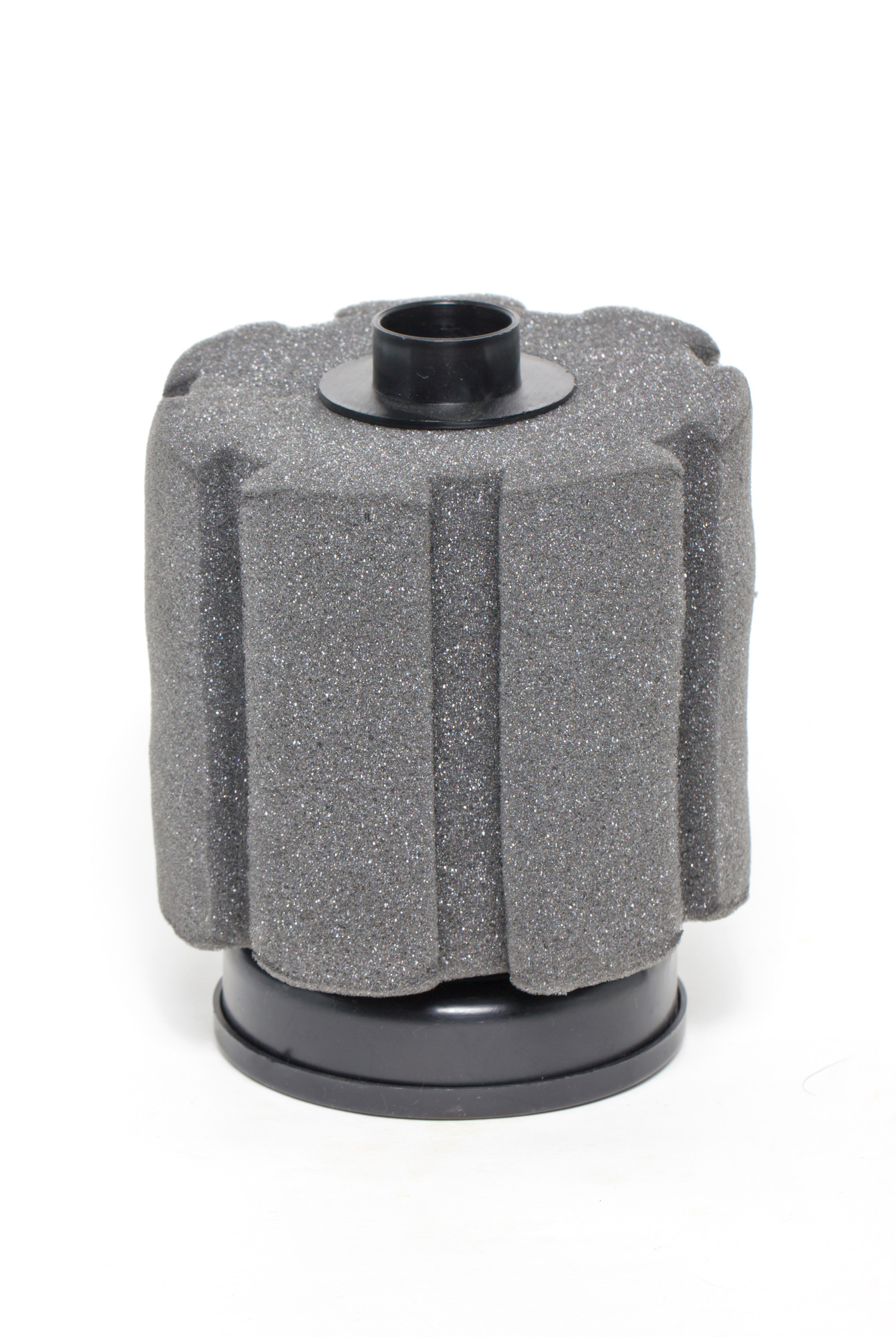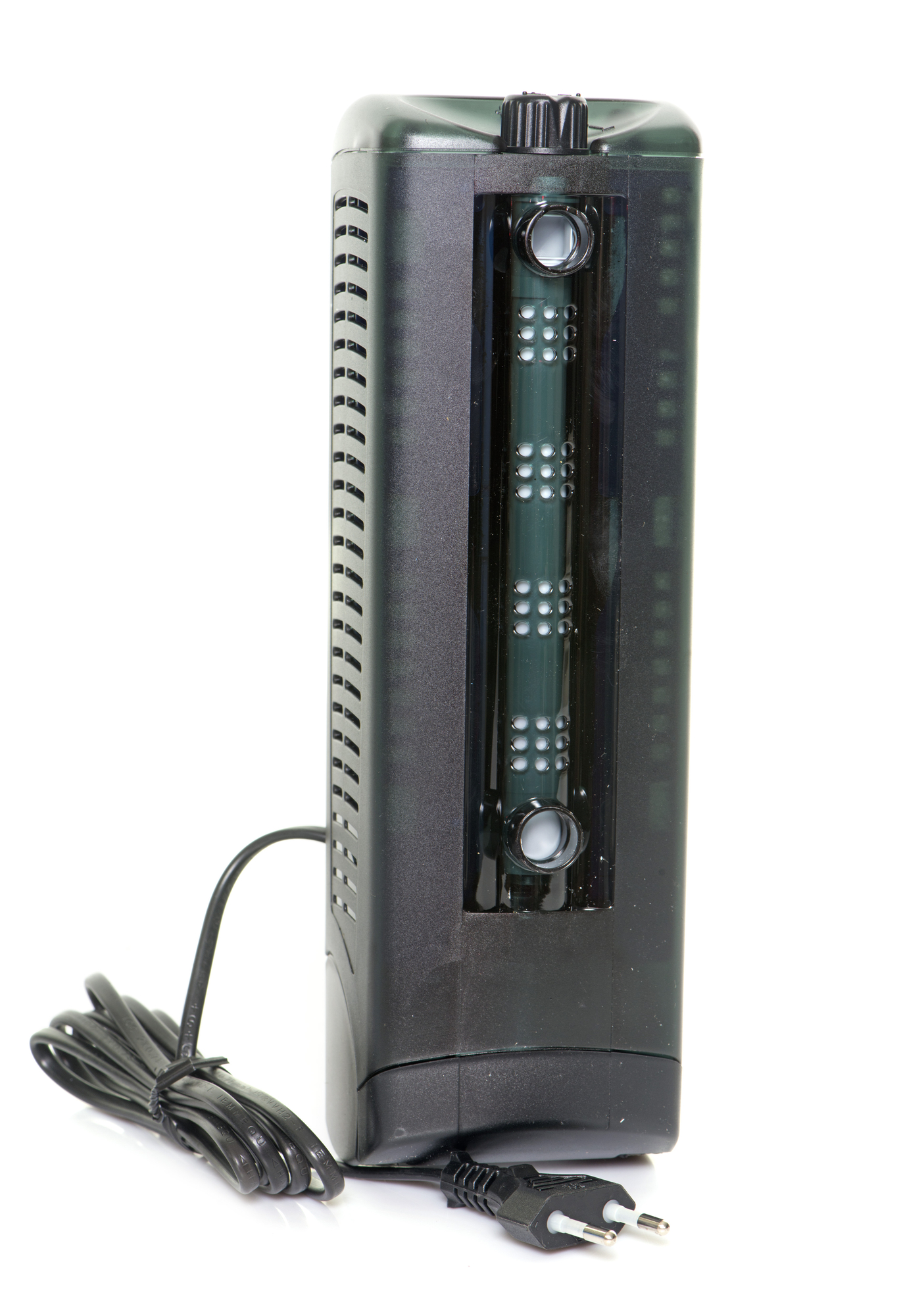There are many different filtration systems out there, ranging in size, price, efficiency, and customizability. It can be difficult to figure out which filtration system is the absolute best choice for your aquarium and then to also find out what kind of filter media you should be running.
However, for smaller tanks and quarantine tanks that may have delicate livestock, sometimes a smaller sponge filter is all you need to keep a stable ecosystem. There are a few main differences between sponge filters and power filters though, and the best choice will depend entirely on the specifics of your fish tank.
Keep reading to find out everything you need to know about filtration, how sponge filters work, and if a sponge filter is right for your aquarium.
Why filtration is important
Simply put, filtration helps keep your fish tank clean; most filter systems are designed to remove detritus and other waste, clean the tank water of pollutants and other excess nutrients, and provide additional surface area for bacteria to grow to help maintain water parameters. These are achieved by having a filter that provides mechanical, chemical, and biological filtration respectively.
Mechanical. Mechanical filtration works by capturing free-floating waste particles in the water column. A piece of aquarium mesh or other sponge is placed in the filter system to take out any debris that happens to pass by. In order to be fully effective, this filtration needs to be regularly rinsed and cleaned with used-aquarium water; using new water could kill beneficial bacteria that has started to populate the mesh or sponge.
If this mesh or sponge is left in the filter for too long, the debris can start to leak out excess nutrients, like nitrate and phosphate, which can lead to a bigger problem within the tank, like nuisance algae.
Chemical. Chemical filtration is not always necessary and does not need to be run constantly in the tank, but can help remove pollutants and other excess nutrients that make their way into the display aquarium. Activated carbon is a very popular choice and mainly helps remove discoloration and/or odor from the tank; contrary to popular belief, activated carbon does not remove ammonia or other harmful parameters from the tank. Running activated carbon will also strip the fish tank of any medications that may have been recently used, which can come in handy for cleansing treated quarantine system.
Chemical filtration also includes nutrient-remover filter media, like those prescribed for lowering ammonia, nitrate, or phosphate levels. It is important to note that these products should only be used as a last resort; make sure to find the source of your problem and treat it from there.
Biological. Biological filtration is arguably the most important part of the filtration of your fish tank; biological filtration is another term for the beneficial bacteria that establishes throughout the fish tank and facilitates the nitrogen cycle. As long as there is sufficient beneficial bacteria and water movement throughout the tank, an aquarium could hypothetically run without mechanical or chemical filtration as we will discuss later.
Beneficial bacteria will cover the available surface area of your aquarium, however, this is sometimes not enough depending on the bioload created in your system. Some hobbyists choose to set up a secondary area, whether in a hang on back filter (HOB filter), sump, or canister filter, to fill with porous media to increase surface area for beneficial bacteria to grow; some popular products for doing this are bio-balls or pieces of live rock for marine systems in particular.
It is also important to remember that while not technically part of the filtration system, overall water current and movement can also dictate the success of your aquarium. Marine reef systems especially need well-planned and alternating flow patterns that allow for nutrients to be fully circulated throughout the tank and to prevent dead zones where detritus may build up and lead to algae. Even if a filtration system is added to the tank just to increase the amount of biological filtration, this will provide additional water movement that could make the ecosystem function better.
Filtration systems
Does your tank need mechanical, chemical, and biological filtration? Can it do without chemical filtration? Do you have enough biological filtration? What about having no filter at all on your fish tank?
When picking out a filtration system, it can be difficult to gauge how much is enough. As a general rule, it is always better to have more filtration than what is recommended than to find yourself with not enough. First, you have to figure out which kind of filtration system, sumps, hang on back filters, canister filters, or sponge filters, will work best for both you and your aquarium.
One type of filter we won’t be covering in this section is the undergravel aquarium filter, which you can read more about here.
Sump filters
Sumps tend to be the most complex, yet most customizable types of aquarium filters. A sump usually involves an exterior tank that the water from the main aquarium is fed into through the overflow box and connected plumbing. The water is then taken through a series of chambers designed to fulfill mechanical, chemical, and biological filtration through means of filter socks/sponge, refugiums, protein skimmers, and other media. The water is then returned to the fish tank with decent flow.
Sump filters are usually more favored in the realm of marine tanks as they store unsightly aquarium equipment, provide additional water volume, water flow, and surface area, and increase water agitation for better gas exchange. Since these systems are usually hidden underneath the tank in the cabinet or even installed in a separate room, the remaining display aquarium becomes free of excess equipment and wires.
Additional water volume and surface area make aquarium parameters more stable by increasing biological filtration, increasing the rate at which nutrients are used and converted throughout the system. Water agitation is also increased as sumps are constantly moving water through various chambers and plumbing, helping exchange atmospheric oxygen and carbon dioxide; surface water is further being drained through the overflow and being overturned by the return nozzle, helping to decrease and remove the surface film.
Sump filters can especially make water changes easy as water can be directly added and removed from the tank below instead of from the main display. However, while sumps provided plenty of space to add additional mechanical, chemical, and biological filtration, they can be expensive to set up and maintain and cause a lot of evaporation; this is especially a concern in marine tanks as salinity increases with evaporation rates.
Note: Sumps may also be used on freshwater aquariums, though most hobbyists prefer to run a type of power filter instead.

Hang on back (HOB) filters
Also referred to as power filters, hang on back filters are probably the most common filter systems to see on a typical home aquarium. These self-contained filters hang on the back of the aquarium and take water in through an intake pipe, run it through media, and then push the water out through a large opening close to the intake pipe.
The hang on back filter is popular, especially on smaller tanks, because they provide the basic filtration that is necessary for most systems. Most often, hobbyists will use a hang on back filter to hold aquarium floss or sponge for catching particles and activated carbon for removing impurities; if necessary, other filter media, like phosphate and nitrate remover, can also be easily used.
For the most part, hang on back filters are as all-in-one as you can get for a filtration system; they are efficient, compact, easy to clean and maintain for most tank sizes, and provide space for mechanical, chemical, and biological filtration. Some hobbyists have even found success in converting their hang on back filter to a chamber only for additional biological filtration with bio balls or other media or have used them to house mini refugiums. However, a hang on back filter can look bulky, can be noisy, and will usually malfunction at one point or another.
If you’re looking for something a little more powerful for your larger fish tank system, then a canister filter might be a better option.
Canister filters
Canister filters are somewhere between sumps and canister filters and are a good alternative if you want something bigger than a hang on back filter but also something more contained and all-in-one than a sump filter. Canister filters have an intake pipe and return nozzle similar to those of a hang on back filter but the plumbing is designed so that the entirety of the canister filter can be hidden for viewing pleasure underneath the main fish tank or nearby.
A canister filter provides different levels and sections for all necessary mechanical, chemical, and biological filtration with the advantage of not having to be cleaned or replaced nearly as often as a hang on back filter. Most hobbyists prefer canister filters for larger aquariums where a sump isn’t the best option. However, a canister filter can be more difficult to clean and less easy to maintain and is slightly less customizable than the other two options; some hobbyists have even found that they are less likely to perform regular maintenance on a canister filter due to it being quite the hassle to disassemble.
Sponge filters
Probably one of the least appreciated forms of filtration is the sponge filter. The typical sponge filter doesn’t allow for much customizability and only really provides a means for biological filtration and some mechanical filtration. However, a sponge filter can provide more than enough filtration for specific systems that might need less flow or have delicate fish or invertebrates.
No filters
It is possible to run a fish tank without any filtration, though a sponge filter or air stone/pump is always better than nothing. In order to do this, the bioload must match the exportation of nutrients in the tank. Because of this, these tanks are usually lightly stocked and heavily planted.
These self-sustaining systems work on the fact that fish and invertebrates create waste and feed the aquarium with essential nutrients. These nutrients are then uptaken by the plants and removed from the water column, namely ammonia, nitrite, nitrate, and phosphate. These aquariums also tend to have plenty of surface area, through substrate, rocks, and driftwood, for enough beneficial bacteria to grow to balance out nutrient input and output.
Likewise, fish create carbon dioxide in the aquarium water which is then picked up by the plants for photosynthesis and converted back into oxygen, which is then used by the fish to breathe. Some hobbyists find that they need to perform more water changes due to an uneven balance in bioload or to help with gas exchange, but others find that the tank water parameters are able to maintain themselves if the ecosystem is self-sufficient enough. An additional powerhead may also keep tank water circulating for better nutrient distribution and surface water agitation if you are not ready to go completely filter-less yet.
Of course, the disadvantages of not having a filter are losing additional space for beneficial bacteria and for filter media if necessary. Because of this, hobbyists prefer using a sponge filter at the very least to create additional water flow and surface area for beneficial bacteria to grow.
Sponge filters
A sponge filter is a very simple yet effective alternative to the conventional aquarium sump, hang on back filter, or canister filter. While they are not the best option for every aquarium system, sponge filters work well in smaller and well-established aquariums that require low water flow and have delicate livestock. They are powered by an air pump and help oxygenate the water while filtering out larger particles and housing beneficial bacteria.
How sponge filters work
A sponge filter does not have very complicated mechanics but is very effective at what it is supposed to do. Sponge filters work by being attached to an air pump via aquarium airline tubing in order to create pressure. That air pressure then drives the water in through the sponge, filtering out particles and creating a space for bacteria to populate. The air will then escape in the form of bubbles and create surface water agitation for gas exchange.
An air pump is necessary for making sponge filters work, but are relatively inexpensive and should last for a while; some are even battery operated which can come in handy if electrical outlets are scarce.
Do sponge filters clean the water in a fish tank?
While a sponge filter will filter out some larger particles from the water column, it is not as effective at cleaning the water as a sump, hang on back filter, or canister filter. In order to keep a tank running on just sponge filters alone, regular tank maintenance is required. This means that a weekly water change and substrate vacuuming is absolutely necessary to make sure that detritus doesn’t build up in the tank.
Hobbyists also find that when disrupting their sponge filter, a lot of detritus and other waste tends to fall back down to the bottom of the tank. To keep your sponge filter from becoming clogged though, it is recommended to squeeze it out in used-aquarium water about every 1-2 weeks. Make sure to never rinse the sponge in tap water as this will kill the beneficial bacteria that has populated the surface area and could cause a mini-cycle to happen in your tank.
It is also important to keep in mind that a sponge filter will provide no means of chemical filtration. This means that any water added to the tank should be from a trusted source, like distilled water or reverse osmosis (RO) water, to ensure that unwanted pollutants are not entering the system. This also means that problems regarding nitrates or phosphates will need to be treated organically as there is no room for chemical filtration, though some hobbyists set up temporary hang on back filters just for this purpose.
When to use sponge filters
If hang on back filters seem to be the go-to choice for filtration, why choose a sponge filter instead? There are a few reasons why a sponge filter might be better than a traditional filter for your particular fish tank setup.
Delicate livestock
One of the main reasons hobbyists prefer sponge filters to other kinds of filtration is that they protect smaller, more delicate livestock from being sucked up or pushed around in the water current. Too many times, shrimp, tetras, baby fish, and baby invertebrates get sucked up into the filter and end up being too late to be saved. This is why it is so important to know which fish, invertebrates, and plants you plan on getting for your tank so you can prepare with the right equipment!
If your stock list is filled with small fish and invertebrates, it might be worth considering getting a sponge filter, especially if the tank is smaller and bioload is minimal. A sponge filter will also provide a place for shrimp and snails to feast on detritus and will help clean up some waste for you.

Low bioload
A sponge filter may also be enough for your tank if you don’t plan on having much in it. While the general rule is to have a filter rated for at least double the size of your aquarium, sometimes it just isn’t needed. Instead, it might be more important to get a well-rated air pump and a correctly-sized sponge filter.
As mentioned before, chemical filtration does not remove ammonia, nitrite, or nitrate from the water column. This means that if your tank is not likely to experience large influxes of poor water quality, then a sponge filter should provide enough biological filtration and mechanical filtration as long as other regular aquarium maintenance is maintained.
Some hobbyists have been successful in keeping aquariums with slightly higher bioloads by compensating with an additional sponge filter; however, this is not recommended if you do not have enough time to monitor the system closely and adjust accordingly if needed.
Quarantine/breeding tank
Another popular use for the sponge filter is for in a quarantine or breeding tank. A sponge filter is perfect for a quarantine tank as it allows for adequate filtration while not interfering with monitoring and treating fish that are going to be introduced to the main tank or that have come down with a disease or infection.
Sponge filters are great for quarantine systems because they are gentle and will not suck in/push around stressed fish. On top of that, since activated carbon removes most important chemicals from fish medications, a full hang on back filter setup just seems over the top for what is needed to ensure adequate filtration in a quarantine tank; a sponge filter is compact and does what it is supposed to do to keep water parameters in check without removing important medications.
Similarly, sponge filters are regularly used for breeding tanks for the same reason. A major concern about breeding tank filtration setups is the water flow rate in and out of the system. A sponge filter will keep baby fish and other invertebrates from getting sucked in while also staying safe from an overly strong water current.
If you need help setting up a quarantine tank, make sure to check out our quarantine tank 101 – how to set up a quarantine tank guide here!
Price
While you definitely want to get the best-quality filter that you can for your system, sometimes the budget gets in the way. Luckily, a sponge filter is usually a good inexpensive alternative for most aquarium filtration systems.
When buying a sponge filter, it is important to consider the size and bioload of your tank. A larger tank will need a larger sponge filter and a higher-rated air pump. Remember, the most important bacteria for keeping your aquarium in check is housed in the sponge itself, so the size and water intake rate matter.
For a complete sponge filter setup, you will need to purchase the actual sponge filter, aquarium airline tubing, and an air pump; some sponge filter kits may include all these items as well as various valves to help regulate air pressure. All in all, a sponge filter setup will cost around 20-30 USD.
However, sponge filters tend to be cheaper to maintain than sumps, hang on back filters, and canister filters. One of the most expensive parts about owning those other filtration systems is having to replace floss and media. Sponge filters don’t need to be replaced until the sponge actually starts to fall apart; otherwise, all that’s needed to clean a sponge filter is some regular squeezing and possibly some scrubbing if the intake slots become clogged. It is recommended to get a decent quality air pump so that it is less likely to malfunction.
Note: An air stone is not the same thing as a sponge filter; an air stone will not provide the mechanical and biological filtration that a sponge filter does. However, an air stone will also require airline tubing and air pump. For more information about air stones, make sure to check out our guide here.
Is a sponge filter enough filtration for your tank?
For the most part, a sponge filter works best in small tanks that have a low bioload, or that is otherwise heavily planted. However, hobbyists have had success keeping even messy goldfish with a sponge filter or two with little to no problems. How do you know if a sponge filter will provide enough mechanical and biological filtration for your aquarium?
Technically, a well-planned out aquarium does not need a filter. In exchange, this kind of aquarium would need more frequent water changes and adequate water flow. Likewise, a sponge filter requires slightly more maintenance and planning than a tank with a sump, hang on back filter, or canister filter; but don’t let this deter you from trying it!
The most important factors to keep in mind are mechanical and biological filtration efficacy. As we mentioned before, a high-rated air pump will be needed for larger tanks as more pressure causes more water to be pulled in through the sponge, resulting in more mechanical filtration. However, since sponge filters don’t cause currents throughout the tank apart from surface water agitation, it is important to make sure that dead zones aren’t occurring in your aquarium. In order to prevent this, it might be necessary to purchase an additional aquarium powerhead.
Secondly, an additional sponge filter will provide more space for beneficial bacteria to populate and grow. Without enough bacteria, your aquarium will struggle to maintain parameters and could risk ammonia spikes due to a higher influx of waste than can be processed.
One sponge filter should be enough to filter tanks under 20 gallons (75.7 L) as long as it is slightly understocked. For a fish tank larger than this, it might be necessary to either upgrade the air pump and/or add another sponge filter entirely.
Conclusion
The sponge filter is often overlooked for beginner hobbyists because it is often deemed as inefficient, hard to maintain, and an eyesore in the tank. However, sponge filters can provide the same mechanical and biological benefits as a sump, hang on back filter, or canister filter given the right aquarium set up.
The sponge filter is especially favored when keeping delicate livestock, a low bioload, a quarantine/breeding tank, or when the budget is tight. They work particularly well in smaller tanks, but can be upgraded with by installing a higher-rated air pump or an additional sponge filter. In addition, it is very easy to clean a sponge filter and sponge replacement is not often.
If you have any questions about how sponge filters work, the benefits of sponge filters, if a sponge filter is right for your tank, or you have had experience using one of these filters in your own aquarium, don’t hesitate to leave a comment below!

























